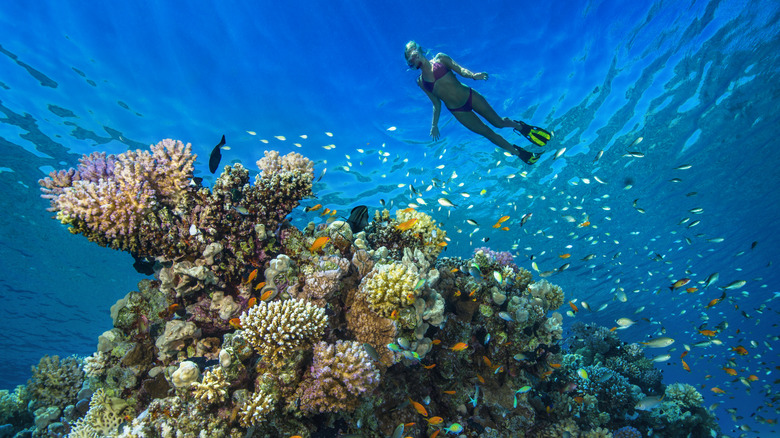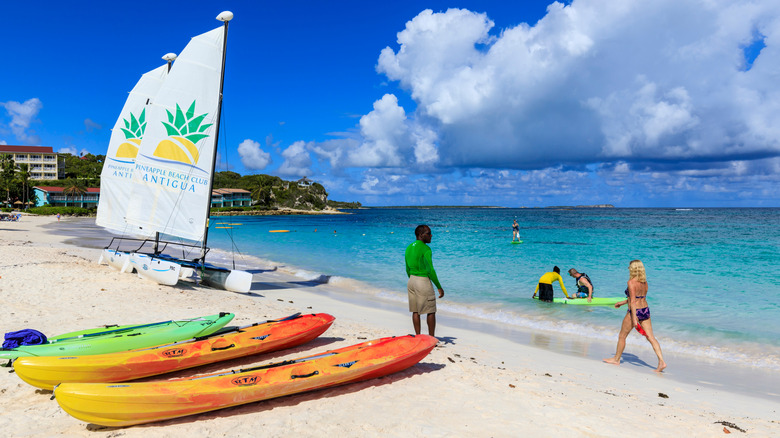The twin island country of Antigua and Barbuda might be one of the smallest in the Caribbean, but that doesn’t mean it’s short on hidden gems. It’s hard to choose a single beach to recommend out of its 365 — which, by the way, are all free and open to the public — but Long Bay Beach on Antigua is the place to be for nature lovers. It offers folks the opportunity to become one with an underwater rainforest: a whopping 2-mile long coral reef. From the moment you step into its clear waters, you can already see schools of fish swimming by your legs, so why not join them by venturing yourself toward the reef? Find out what it’s like to swim among fish of every size and color before relaxing on this beautiful white sand beach.
This small country with fewer than 100,000 inhabitants welcomes tourists with open arms, from their resorts to their local beach vendors. However, this destination is not as talked about, nor as visited, as other places in the Caribbean: The region gets over 30 million tourists every year, while Antigua and Barbuda itself only gets around 300,000. After a long internet search, I was shocked to notice the lack of travel blogs and YouTube channels featuring Long Beach Bay and its reef. This needs to change ASAP!
Antigua’s coral reef is the star of the show
So, what exactly is a coral reef? These are formations of various coral polyps, and they are not only a feast to the eyes — so many different colors, shapes, and textures – but also of utmost importance for marine life. Fish and other marine organisms require healthy coral reefs for shelter, reproduction, and even for finding food. According to CoralGuardian, a non-governmental organization that protects and restores coral ecosystems around the globe, 90% of coral reefs could disappear by 2050 due to global warming and other human-generated threats like overfishing and pollution, so being responsible in your visit is paramount. Make sure you know how to safely snorkel around coral reefs before getting in the water.
Once you don your mask and reef-safe sunscreen, get ready to swim with eagle rays, long needlefish, yellowtail snapper, moray eels, barracudas, nurse sharks, and blue tang (Remember Dory from “Finding Nemo”? This is her species!). To make the most of your time, consider joining a guided snorkeling tour. You won’t be able to use your smartphone underwater to identify any species, but the local guides are experts on the matter and can point out hidden marine species and help you understand the reef’s ecology. (You can also bone up ahead of time on our list of the coolest fish to see when snorkeling in the Caribbean.)
Once you’re done with the underwater adventure, it’s time to relax on Long Bay Beach’s soft white sand. Locals will rent you a beach umbrella and sun loungers, or you can just relax by floating in the water. Given that coral reefs absorb the energy in waves, the water is flat like a pool, which makes it great for amateur swimmers and children.




